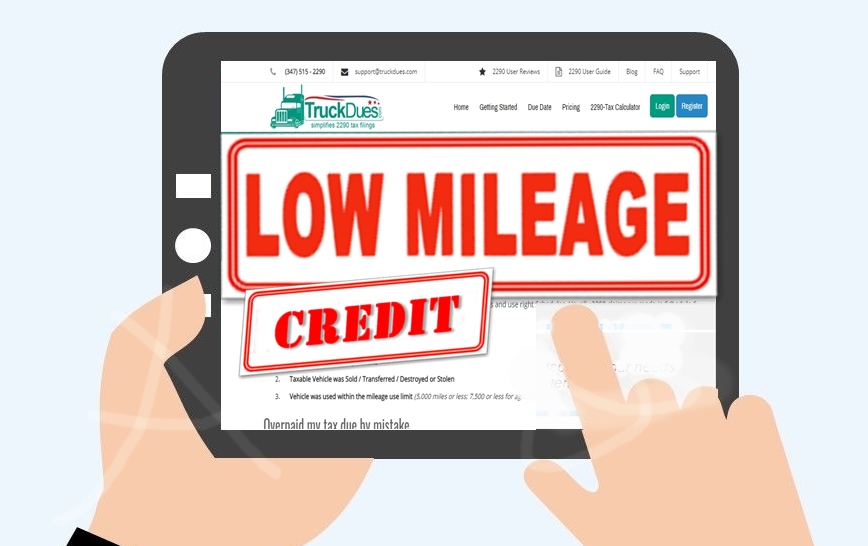Hello there Truckers, doesn’t this question sound familiar to you? Almost on a daily basis, we receive calls as such inquiring about How do I/where do I report my truck that is not used above the desired mileage for exemption? The common misconception that evolves amongst many HVUT e-filers is that both these terms sound similar. However in terms of Form 2290 they are different attributes.
While
e-filing your HVUT Form 2290, you might
have noticed the section, Suspended/Exempt vehicles this section is basically
to report when the heavy vehicle is been used under the desired mileage limit
for exemption (5000 miles for Commercial
& Logging based Units) & (7500
miles for Agricultural based Units) In this case, you need not make any tax
payments to the IRS as they are exempt but you still got to report the vehicle
on this Form to legally claim an exemption.
On the
other hand, The Term Low mileage vehicle credits sounds to be referring to low
mileage or exempt vehicles, but in reality it’s related to Claiming a refund on
the Taxes paid full in advance on a low mileage vehicle. Upon realization of
the mileage recorded by the end of the tax period for which the tax payment was
made full in advance, you claim a full refund back from the IRS during the
renewal of the following tax year’s tax return.
Sounds confusing? Well here’s an example: John purchased a commercial utility vehicle in July 2018 and he needs to get his vehicles registered with the state authorities so does he needs to file a Form 2290 report. So he reported the vehicle on the Form 2290 (For the period beginning July 1st, 2018 through June 30th, 2019) and made an upfront tax payment to the IRS. However, due to unforeseen mechanical wear & tear unfortunately the truck was not used quite actively as he expected hence it recorded an overall mileage that is less than/below the actual mileage limit for exemption as (5000 miles)
Now, he’s got
to renew his Form 2290 for the upcoming period (For the period beginning July 1st, 2019 through June 30th,
2020. During this time, he’s got a chance to claim a full refund on the tax
paid for past tax year on the renewal form so evidently the tax due amount will
be nullified on the renewal form. On the other hand, If John does not seem to
own any trucks during the next renewal, he can simply claim a full refund (Form of cash) by filing the Form 8849 Schedule 6 ( Claim for refund of
excise taxes) and wait until 21 business
days to receive a refund check back in his mailing address.
Economically E-File your HVUT Form 2290 via www.truckdues.com and receive the IRS
digital watermarked copy of Schedule 1 back in your e-mail instantly. Reach us
back for any further assistance over the following mediums:
Phone: (347) 515-2290 [Monday
through Friday, 9 A.M to 5 P.M, Central Standard Time]
E-mail: support@truckdues.com
Live chat with our tax representatives.
Have a Good One! See you over the next article.


